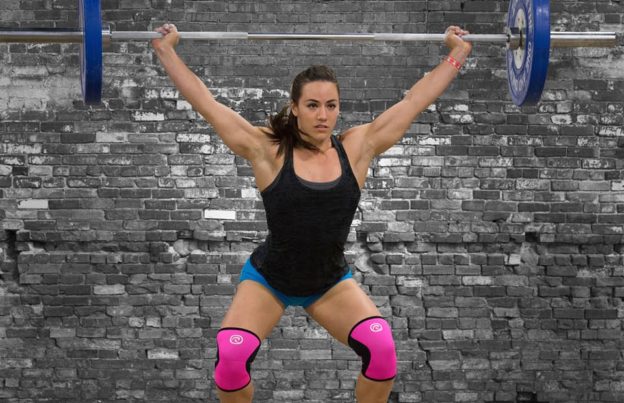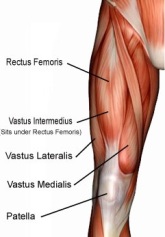
Knee injuries are huge amongst the athletic population. Whether it be a torn ACL, MCL, LCL, or meniscus, many injuries can occur within this joint. Therefore, many athletes turn to prophylactic knee braces for support and protection without inhibiting mobility.
There are four categories of knee braces:
- Knee sleeves (which are not braces)
- Prophylactic knee braces
- Functional knee braces
- Postoperative or rehabilitation braces
What Are Knee Sleeves?
To clarify, knee sleeves are NOT braces. They do provide some support but not even close to the same as a knee brace would. Knee braces are designed to protect a joint from further damage after an injury is sustained, or they can be used to prevent an injury from occuring. One thing knee sleeves do well is provide compression. This helps to increase blood flow which reduces the sense of pain experienced during and after performance (this could be a good and a bad thing). Knee sleeves can also act as a placebo effect. Since the athlete knows it is on their knees they are more cautious when lifting or participating in a sport. It serves as a reminder. Again, this potentially could be an issue since it is essentially putting a band aid over an injury. If your knees were hurting prior to purchasing knee sleeves you may want to get them checked out before throwing them on and packing on extra weight. There could be the start of an injury and the last thing you want to do is lift heavier on it and make it worse.
Do Knee Sleeves Prevent Injuries?
In a randomized clinical trial with 74 patients a variety of tests were created to see if knee sleeves have any benefit. One group performed a series of exercises with knee sleeves and another group performed the same exercises without knee sleeves.
“The main benefits seem to come from the heat retention that the sleeve provides. By keeping the joint warm, people feel less pain and discomfort in their joints while exercising.”
Another study examined proprioception of knees sleeves during a fatigued and a non-fatigued state. 64 subjects underwent testing in a military hospital. The four metrics used included: braced (with knee sleeves), not braced (without knee sleeves), fatigued, and not fatigued. The study found that individuals with a good sense of joint positioning reported a perceived benefit from knee sleeves in a fatigued state.
Now, all this info is great. For a NON athletic population.
Lets take a look at one study where the test subjects are college football athletes with no history of knee injuries and are active on their roster. The athletes were put through a series of jump tests. There were four groups: non braced, wearing knee sleeves, wearing knee sleeves with bilateral metal supports, and another group using a prophylactic knee brace. Researchers found no difference in the results between these four groups.
Another study followed an entire collegiate football team around for 2 years to study the effectiveness on prophylactic knee braces (not sleeves). These braces are mainly seen on the offensive linemen. The researchers found there was actually a higher rate of injury in the group wearing those knee braces. Even though knee sleeves were not looked at, it is still pretty interesting to think about.
Lets Wrap This Up…
When any kind of compression sleeve or wrap is worn for an extended period of time, there is a statistically significant decrease in soreness and pain, which can result in a minimal increase in performance the next day. One study found that if compression is worn for 24hours, there was a 1-2% increase in performance the next day.
You may be thinking, ok well there is something to help support the use of knee sleeves..
Lets look at those numbers in a different way.
- If your “Fran” time is 2:30, your time would potentially improve to somewhere between 2:27 and 2:29.
- If you have a 300lb front squat, your lift would potentially go up three to six pounds
Even if you do not mind such minimal results, it means wearing your knee sleeves for 24 HOURS! I’m pretty sure they would not go well with my denim shorts and t shirt..
If You Are Suffering From Sore and Painful Knees
If your knees crack or are painful/sore before/during/after a lift or workout, it is time to address the injury before it potentially becomes worse.
You could have limited ankle mobility– This could put your knees in incorrect position, placing additional stresses on the structures in your knee
Your calf could be extremely tight- Again this can reduce ankle mobility- this muscle also crosses over into the knee joint which can pull your knee into unstable positions and limit motion
Quad imbalances- Your quad muscle is made up of 4 heads (Vastus lateralis, Rectus femoris, vastus medius, vastus intermedius). Many times one of our quad muscles becomes overactive and pull our patella in a unnatural pathway (this is not super obvious to the eye-it can be minimalistic movements)

So there you have it. If you are a fan of the knee sleeve and want to continue wearing them, go for it. I am not here to tell you otherwise. I am just throwing out there some info I read up on. Plus, it is not like knee sleeves can injure you or make your joints unstable. There just is not enough info out there to show significant reasons as to why they should be used.
good one .. well as u mentioned it serves great for one’s placebo !!
LikeLike
Thanks for reading and commenting!
LikeLiked by 1 person
I think the heating effect (keeping the joint warm) is probably the only reason I use knee sleeves. I also only use them only when squatting. I do prefer using them over bare when squatting. IMO it really does keep the joint/muscles warm, essentially allowing me to waste less time directly warming up my “knees” and then not cooling down too much between sets. The braces and rest of the article I agree with. Wearing supported knee braces and increase risk of injury does make sense though, considering it acts to almost destabilize the joint through ROM. You nailed on the soreness and pain. Kinetic energy transfer begins from ground going up (feet upwards). Plenty of injuries, aches and pains are probably the result of problems earlier in the kinetic chain than what actually hurts, especially low back pain.
Great article overall.
LikeLike
I appreciate the comment, especially since you use them and have first hand experience. Thanks for taking the time to read my article!
LikeLike
NP. I would say as well that there is no need to buy the expensive brand of sleeves either. I bought mine for $20 pair vs $80 pair and they still great after a year’s use and squatting nearly daily or 4-5 times a week.
LikeLike
Good to know!! Thanks again for the info
LikeLike
I have seen a number of runners using compression socks which I presume would be for similar reasons. I’m not of a level where I feel even remotely ‘ in need’ but what is your opinion on those?
LikeLike
Compression socks as in socks socks or sleeves for the lower leg? Compression sleeves are great for keeping the calves and muscles around the shin warm. I know a lot of people wear them for shin splints. I don’t mind these so much to keep the muscles warm, however if you are experiencing pain (shin splints, calf pain) they should be used as a method to help recover/repair damage that has been done. Compression socks can help reduce swelling and pooling of blood within the foot to help reduce extra tightness in the sneaker, blisters, pump bump and pain. Again, these too have the benefits especially to reduce swelling and prevent friction but other running socks that have a little extra cushion and fabric are great also. Hope this helps!!
LikeLike